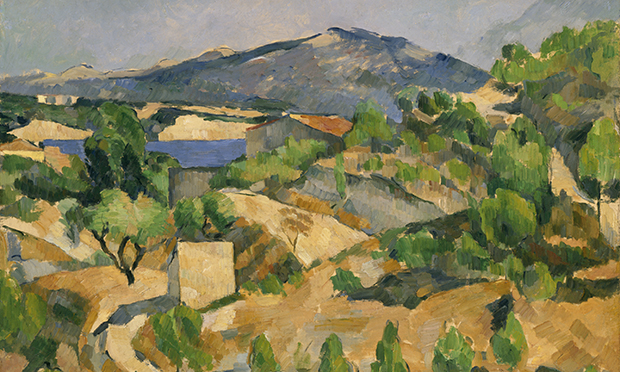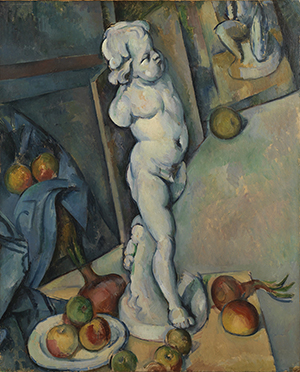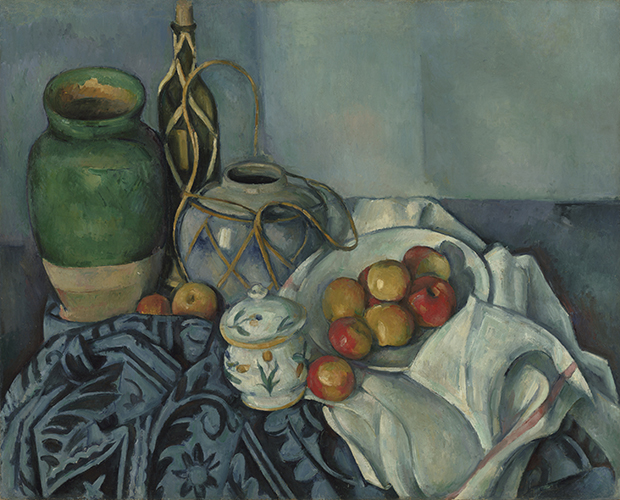Cézanne: The EY Exhibition, Tate Modern, review: ‘A painter of nature’

Paul Cezanne’s The François Zola Dam (Mountains in Provence), 1877-8. Image: Amgueddfa Cymru – National Museum of Wales
“With an apple I will astonish Paris”, predicted the young Paul Cézanne.
The post-impressionist painter’s apples, trees, mountains and rocks went on to astonish a far wider audience than he had ever imagined; his efforts in Paris took time, however.
The Provençal artist’s technical audacity was initially rejected by the metropolitan art establishment, and it was only later in his career that contemporaries such as Monet, Gaugin and Matisse came to appreciate the novelty of his approach to form and texture.
Cézanne: The EY Exhibition at the Tate Modern is the first major display of the painter’s work in London this century, gathering together more than 80 paintings from collections around the world.

Still Life with Plaster Cupid, 1895. Image: The Courtauld
These are grouped by theme and roughly by period, with rooms devoted to still-lifes, bathers, portraits and the Provençal landscape.
Also included are some of the lesser-known works from his early period in Paris, when he depicted murders, destitute Parisians, and other scenes evoking thematic parallels with the novels of his friend Emile Zola.
Yet Cézanne was above all a painter of nature. His mature work is almost completely stripped of the symbolism and mythology common to the mid-19th-century art scene. Instead it focuses on the physical qualities of objects, how the light strikes them and how their colours radiate energy.
At the end of his life he summed up his aims in simple terms: “I believe in the logical development of what we see and feel through the study of nature.
“Techniques are merely the means of making the public feel what we ourselves feel, and making us acceptable”.

Still Life with Apples, 1893–1894. Image: The J Paul Getty Museum
When eventually he returned to his native Aix-en-Provence, Cézanne’s attention turned to the local, bringing into relief the distinctive vegetation and geology of the area he knew so well.
Too shy to hire life models, he instead painted his family and employees in the familiar surroundings of his studio.
The world depicted in his later canvasses may be small, but the attention he lavished on suffusing it with sensation redefined 20th century painting.
Cézanne: The EY Exhibition runs until 12 March 2023 at the Tate Modern, 53 Bankside, SE1 9TG.
